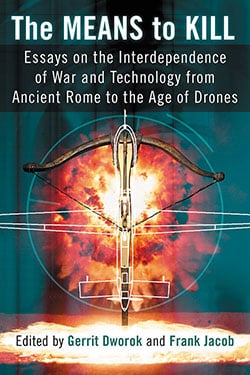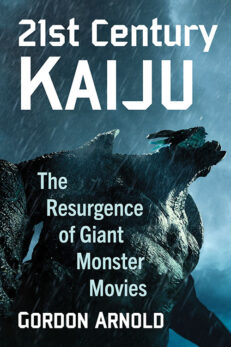The Means to Kill
Essays on the Interdependence of War and Technology from Ancient Rome to the Age of Drones
$29.95
In stock
About the Book
Throughout human history, technological innovation has functioned as a driver of civilization and inspired many people’s belief in progress. When it comes to warfare, where technology is applied with a cruel and deadly logic, a nuanced view is needed. From siege engines to drones, innovation has often served a less enlightened aim: elimination of the enemy. This collection of new essays from specialists in military history examines the interdependence between war and technology from a number of regional perspectives.
About the Author(s)
Bibliographic Details
Edited by Gerrit Dworok and Frank Jacob
Format: softcover (6 x 9)
Pages: 312
Bibliographic Info: 5 photos, notes, bibliographies, index
Copyright Date: 2016
pISBN: 978-0-7864-9717-1
eISBN: 978-1-4766-2280-4
Imprint: McFarland
Table of Contents
Preface (Frank Jacob and Gerrit Dworok) 1
Introduction (Frank Jacob, Gerrit Dworok and Jeffrey M. Shaw) 3
Part I: Ancient Rome and the Medieval Ages
Ancient Naval Artillery Support (Jorit Wintjes) 17
Stirrup, Composite Bow and Traction Trebuchet: Some Remarks on the Interdependence of War and Technology in the Early Middle Ages (Christian Scholl) 30
The Medieval Arms Race: The Confrontation of Orient and Occident in the Crusades and the Reconquista (Thomas Schuetz) 45
Gunpowder and Cannons: Gunnery in the Late Middle Ages (Marc-André Karpienski) 57
Mining and Warfare: An Overview of Centuries of Interdependence (Olaf Wagener) 71
Part II: The Age of the World Wars
The German Navy League, Navalism and the Perception of the Imperial German Navy as a Technological Masterpiece, 1898–1914 (Sebastian Diziol) 85
The Soviet Propaganda Film as an Instrument of Warfare: Sergey Eisenstein’s Montage Technique and the “Global Civil War of Ideologies” (Gerrit Dworok) 98
Four Technical Artifacts of the Great War (Kurt Möser) 111
The Special Operations Executive (SOE) and the Use and Abuse of Peacetime Technology, 1940–45: A Case Study of Unconventional Warfare (Roderick Bailey) 126
The Liberal Attraction to Technological Progress and the RAF (Tomáš Kučera) 137
Resource Policy and Technical Understanding: Aspects of Hitler’s Wartime Economy (Eckehard Dworok) 153
Part III: The Cold War
A Weapon Changed the World: The AK-47 and the Consequences for Asymmetric Warfare (Frank Jacob) 169
Tous Azimuts: Yugoslavia’s Defense Policy in the Cold War (James Horncastle) 182
Technology, Warfare and Intra-Alliance Rivalry: The U.S.–West German Main Battle Tank Harmonization in the 1970s (Benedict von Bremen) 197
Equipping the Marine Corps for the 21st Century, 1975–1990 (Nathan R. Packard) 210
From AirLand Battle to Effects-Based Operations: United States Air Force and Army Doctrine Development from 1980 to 2001 (Daniel Fuhrer ) 228
Part IV: The Age of “New Wars”
Technology and War: Nanotechnology, Precision and Globalization (Jeffrey M. Shaw) 245
The Fallacy of Humane Killing: Interwar Debates About Air Power and Twenty-First Century “Killer Robots” (Adam Page) 260
Death from the Skies: A Just-War Perspective on the Rise of Unmanned Weapons Systems and the Reduction of Combatant and Noncombatant Casualties (Timothy J. Demy) 277
About the Contributors 293
Index 297





